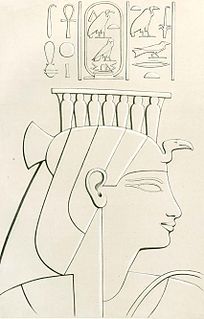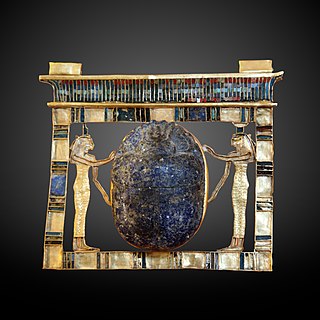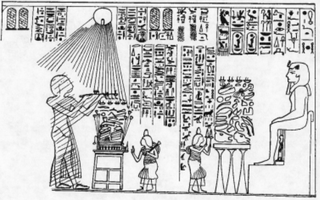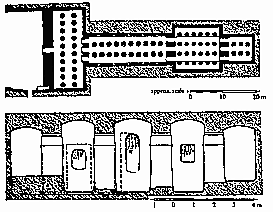| Meryptah High Priest of Amun | |
|---|---|
| Predecessor | probably Ptahmose |
| Successor | probably Maya |
| Dynasty | 18th Dynasty |
| Pharaoh | Amenhotep III |
Meryptah was a High Priest of Amun during the time of Amenhotep III.

Amenhotep III, also known as Amenhotep the Magnificent, was the ninth pharaoh of the Eighteenth Dynasty. According to different authors, he ruled Egypt from June 1386 to 1349 BC, or from June 1388 BC to December 1351 BC/1350 BC, after his father Thutmose IV died. Amenhotep III was Thutmose's son by a minor wife, Mutemwiya.
He is known from a statue mentioning Meryptah with Anen, Amenemhat and Si-Mut who were a 2nd, 3rd and 4th prophet respectively. Aldred conjectures that Meryptah succeeded Ptahmose and served until the end of the reign of Amenhotep III. Meryptah would have served from ca. year 20 of Amenhotep's reign until the end of that reign.

Anen or Aanen was an Ancient Egyptian official during the late 18th Dynasty of Egypt.

Simut or Samut was an Ancient Egyptian priest who held the position of Second Prophet of Amun towards the end of the reign of Pharaoh Amenhotep III. He is known from a number of objects, including his, Theban tomb chapel Tomb A.24.
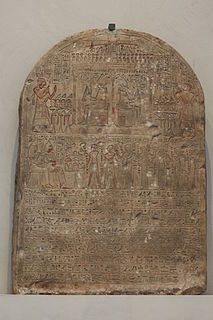
Ptahmose was a High Priest of Amun and Vizier of southern Egypt-(Upper Egypt), under Amenhotep III. Certain historians place him at the end of the reign in 1378 BC. Others place him in the first part of the reign.
Meryptah was granted burial in Thebes (Qurna). Some funerary items were recovered from a pit excavated in the early 19th century. Items include:

The necropolis of Sheikh Abd el-Qurna is located on the West Bank at Thebes in Upper Egypt. It is part of the archaeological area of Deir el-Bahari.
- A kneeling statue of Meryptah singing a hymn of praise to Ra [1]
- The Oriental Institute in Chicago has a statue of Meryptah [2]
- The Metropolitan Museum possesses three stamped mud bricks inscribed for The First Prophet of Amun Meryptah [3]
- A polished boxwood kohl container-(statuette), girl with youth side lock, carrying oversized pot: The Durham Servant Girl. [4]
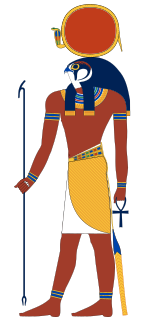
Ra or Re is the ancient Egyptian deity of the sun. By the Fifth Dynasty in the 25th and 24th centuries BC, he had become one of the most important gods in ancient Egyptian religion, identified primarily with the noon sun. Ra was believed to rule in all parts of the created world: the sky, the Earth, and the underworld. He was the god of the sun, order, kings, and the sky.

The Oriental Institute (OI), established in 1919, is the University of Chicago's interdisciplinary research center for ancient Near Eastern ("Orient") studies, and archaeology museum. It was founded for the university by professor James Henry Breasted with funds donated by John D. Rockefeller, Jr. It conducts research on ancient civilizations throughout the Near East, including at its facility, Chicago House, in Luxor, Egypt. The Institute publicly exhibits an extensive collection of artifacts related to ancient civilizations at its on-campus building in the Hyde Park, Chicago community. According to anthropologist, William Parkinson, the OI's highly focused "near Eastern, or southwest Asian and Egyptian" collection is one of the finest in the world.
The mudbrick stamp or brick seal of Mesopotamia are impression or stamp seals made upon bricks or mudbrick. The inscribed seal is in mirror reverse on the 'mold', mostly with cuneiform inscriptions, and the foundation mudbricks are often part of the memorializing of temples, or other structures, as part of a "foundation deposit", a common honoring or invocation to a specific god or protector.






